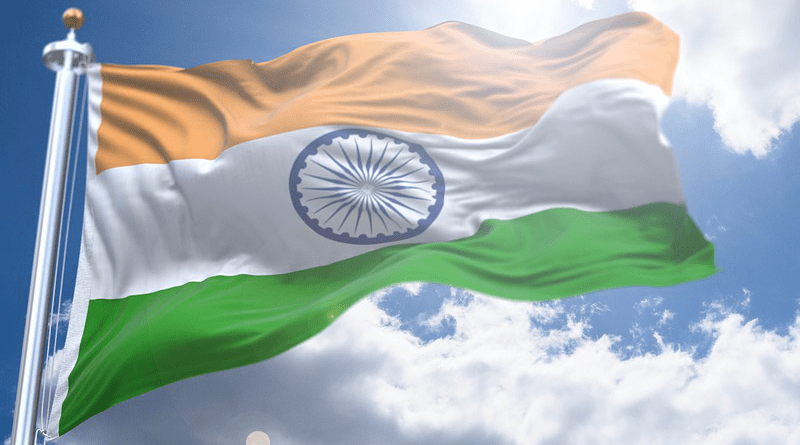India’s Internal Security Outlook: Progress But Still Areas Of Concern – Analysis
THE INDIAN government can derive some satisfaction from the fact that in 2011 several areas of chronic conflict have registered significant improvements, noticeable by the declining fatalities and shrinking areas of extremist violence. However, these do not portend durable peace. In the new year, gains made in the country thus far remain fragile and reversible.
Left-Wing Extremism
For the past several years, the Indian Prime Minister has habitually referred to left-wing extremism (also referred to as the Maoist problem) as the “biggest internal security challenge”. The Ministry of Home Affairs (MHA), however, chose to play down the extremism by referring to it as “one of the biggest threats to internal security”. The MHA can point to the significant improvements achieved in 2011 over the previous year. According to official data till 30 November, 415 civilians, 127 security forces and 98 extremists were killed in 2011, a sharp decline from the 720 civilians, 285 security forces and 172 extremists who died in 2010.
The geographical area under extremist violence also appears to have shrunk. Also, with 12 top leaders belonging to the Central Committee and Politburo behind bars, the movement might be undergoing some level of operational weakness. Since the second half of 2011, the Home Minister has spoken of a strategy of targeting the Maoist leadership. Success was achieved when security forces on 24 November killed the 3rd ranking leader of the movement Kishenji in the eastern state of West Bengal.
The government has further emphasised a new ‘clear, hold and develop’ strategy–using the security forces to protect development initiatives, once regions are cleared of extremist presence. The first area to undergo such a strategy is the Saranda forest in the eastern state of Jharkhand, which was cleared of Maoist presence following a month-long security force operation in August 2011. Several short and long-term projects have been unveiled in the area by the Rural Development Ministry.
To what extent the strategy of carrying out development under a security cover will succeed is a matter of debate in the policy circles. Notwithstanding these achievements, the anti-Maoist operations continue to be hampered by the absence of a national consensus on how to solve the problem. While some states focus on operations by the security forces, others feel that negotiation holds the key.
Jammu & Kashmir and the Northeast
The government’s ability to focus on the Maoist problem has been helped by the decline of violence in the chronic militancy-affected Jammu & Kashmir (J&K) and the North-eastern states.
Three factors are identified as the reasons behind the decline in militancy in J&K: The occupation of the Pakistani facilitators behind the cross-border militancy along the Pakistan-Afghanistan border; the strengthening of the counter-insurgency grid in J&K which has neutralised much of the local militancy; and the unveiling of a range of confidence building measures between India and Pakistan. However, Indian authorities maintain that the terrorist training camps are still active across the border.
Most parts of India’s Northeast, home to a myriad mutinies since India’s independence, are returning to normalcy, following a policy of cooperation from neighbouring Bangladesh. Since 2010, the government in Dhaka has periodically arrested and handed over insurgent leaders who had settled in that country and ran militancy and extortion activities in Northeast India. Insurgent violence has sharply declined as a result.
The United Liberation Front of Assam (ULFA), several top leaders of which had been arrested and handed over by Dhaka in 2010, began a process of peace talks with the government in the latter half of 2011. While negotiations hold the key to peace in the region it is noted that none of the negotiations currently ongoing with several outfits in the region have progressed well.
Terrorist attacks on the hinterland
Three terrorists attacks took place on the Indian hinterland in 2011. These include the explosion outside the New Delhi High Court on 25 May; the serial bomb blasts in Mumbai on 13 July; and the second bomb blast near High Court in New Delhi on 7 September. In spite of the claims of augmented capacities of the intelligence agencies, all the three cases remain unsolved and the identity of the real perpetrators unknown. Authorities have arrested some persons in connection with the 7 September blasts, but have not been able to pinpoint the involvement of specific terrorist organisations.
India’s attempts at putting together an effective counter-terror architecture since the 2008 Mumbai terrorist attacks have been hampered by bureaucratic inertia, inter-ministerial and inter-departmental rivalry and political division. The National Intelligence Grid (NATGRID) and the National Counter Terrorism Centre (NCTC), pet projects of Home Minister P Chidambaram, remain unimplemented. Though he secured the approval of the Cabinet Committee on Security (CCS) to set up the NATGRID in June 2011, little progress has been achieved since then, with the domestic intelligence agency, Intelligence Bureau (IB) objecting to the formation of the new body.
Prognosis
2011 was a year of mixed achievements for the Indian government in the domain of internal security. Whereas the Northeast and J&K appear to have been somewhat stabilised, courtesy favourable systemic conditions, the Maoist theatre and the Indian hinterland terrorist attacks remain issues of grave concern.
These continue to flag the country’s inability to put behind a divided domestic approach on how to respond to terror. Unless the government finds a way to address these issues, much of India will continue to remain in the grip of insecurity in 2012.
This article was published by RSIS


Figures from Crescent International-Atrocities committed by Indian army in occupied Kashmir,in the past 20years.
Killed-100.000/arrested 120.000/children orphaned 120.000/homes destroyed 100.000/women widowed 25.000/raped 10.000/killed in detention 7000/students burnt alive 1000.
India is the largest democracy in the world.